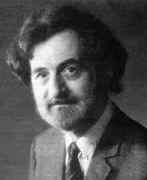◀ ▲ ▶History / 20th-century / Person: Cohn-Vossen (2), Stefan Emmanuilovich
Person: Cohn-Vossen (2), Stefan Emmanuilovich

Paul Cohn was a German-born mathematician who worked in England, mainly in the area of algebra, especially non-commutative rings.
Mathematical Profile (Excerpt):
- In 1928, when Paul was only four years old, he developed scarlet fever.
- Paul's parents spoke to the head teacher, complaining about Paul's treatment, and were told that this teacher was a National Socialist.
- Paul got on well at this school for the following two and a half years.
- This had serious problems for the Cohns.
- Paul's parents decided to send him to the Hamburg Jewish School.
- It meant that, for the first time, Paul had to engage in intensive study to catch up.
- Thereafter, Jacob Cohn found only temporary jobs, one of which was with the Jewish Community.
- The Gestapo arrested 30,000 Jews and one of them was Jacob Cohn who was taken to the Sachsenhausen concentration camp.
- Paul Cohn's education was disrupted since most of his teachers were now in prison.
- In March 1939 Jacob Cohn was released but told if his did not emigrate he would be arrested again.
- Paul Cohn waved goodbye to his parents when he boarded the train on 21 May 1939; he would never see his parents again.
- Paul was greeted at Liverpool Street Station in London by Mrs Lisbet Mueller-Hartmann, whom he remembered well as a distant relation from Hamburg.
- Being over the school age of 14 years, Paul was required to work on the farm (unpaid, as this was a requirement of being accepted for Kindertransport).
- Cohn's work involved feeding and mucking out the chickens.
- On orders of the Hamburg Gestapo, dated 4 December 1941, Jacob and Julia Cohn were deported to Riga on 6 December.
- Paul Cohn was prepared for the news when he learned of his parents' death after the war.
- During his studies in his unheated room and before he started work, Paul needed to heat up his pen because the ink in it would freeze during the winter.
- Cohn's first two papers were published in 1952: A theorem on the structure of tensor-spaces and Generalization of a theorem of Magnus.
- In 1952 Cohn was appointed as a lecturer in mathematics at Manchester University.
- Cohn was a visiting professor at Yale University during 1961-62, spending part of 1962 at the University of California at Berkeley.
- This was the year that Cohn left his lectureship at Manchester to take up a Readership at Queen Mary College of the University of London.
- Cohn remained at Queen Mary College until 1967 but he spent some time on visiting appointments during those five years, holding visiting professorships at the University of Chicago in 1964 and at the State University of New York at Stony Brook in 1967.
- Remaining within the University of London, Cohn moved to Bedford College in 1967 where he was appointed professor of mathematics and head of the Department of Mathematics.
- Cohn moved again within the University of London in 1984 when he was appointed as professor at University College London.
- In this period 1984-89, Cohn fitted in a number of further visits including a return visit to the University of Alberta in 1986 and a return visit to Israel in 1987, this time to visit Bar Ilan University at Ramat Gan.
- In research interests Cohn has worked widely in many areas of algebra but, in particular he has made outstanding contributions to non-commutative ring theory.
- Perhaps Cohn's best known research monograph Free rings and their relations was published in 1971.
- This contained a systematic development of the work of Cohn and others on free associative algebras and related classes of rings, in particular free ideal rings.
- Contained in the book are Cohn's beautiful results on the embedding of rings into skew fields which he had published in earlier papers.
- Other books by Cohn include Algebraic numbers and algebraic functions (1991), Elements of linear algebra (1994) and Skew fields published as Volume 57 in the Encyclopedia of Mathematics and its Applications.
- It is Cohn's merit to provide a coherent treatment of this subject which at the same time leads the reader to a wide range of interesting and important research problems, related to questions in algebra, geometry and logic.
- Cohn was an enthusiastic member of the London Mathematical Society and he served the Society as its secretary during 1965-67, as a Council member in 1968-71, 1972-75 and 1979-84, being President of the Society during 1982-84.
- Cohn was elected a fellow of the Royal Society in 1980 and has received many honours for his outstanding contribution to mathematics.
- Among the various awards to Cohn have been the Lester R Ford Award from the Mathematical Association of America in 1972 and the Senior Berwick Prize of the London Mathematical Society in 1974.
- Paul Cohn gave great support to the London Mathematical Society and was its President from 1982 to 1984.
Born 8 January 1924, Hamburg, Germany. Died 20 April 2006, London, England.
View full biography at MacTutor
Tags relevant for this person:
Origin Germany
Thank you to the contributors under CC BY-SA 4.0! 

- Github:
-

- non-Github:
- @J-J-O'Connor
- @E-F-Robertson
References
Adapted from other CC BY-SA 4.0 Sources:
- O’Connor, John J; Robertson, Edmund F: MacTutor History of Mathematics Archive
